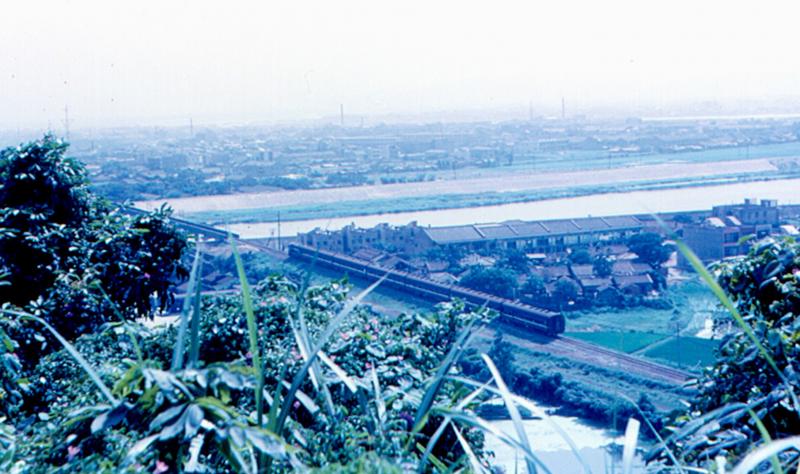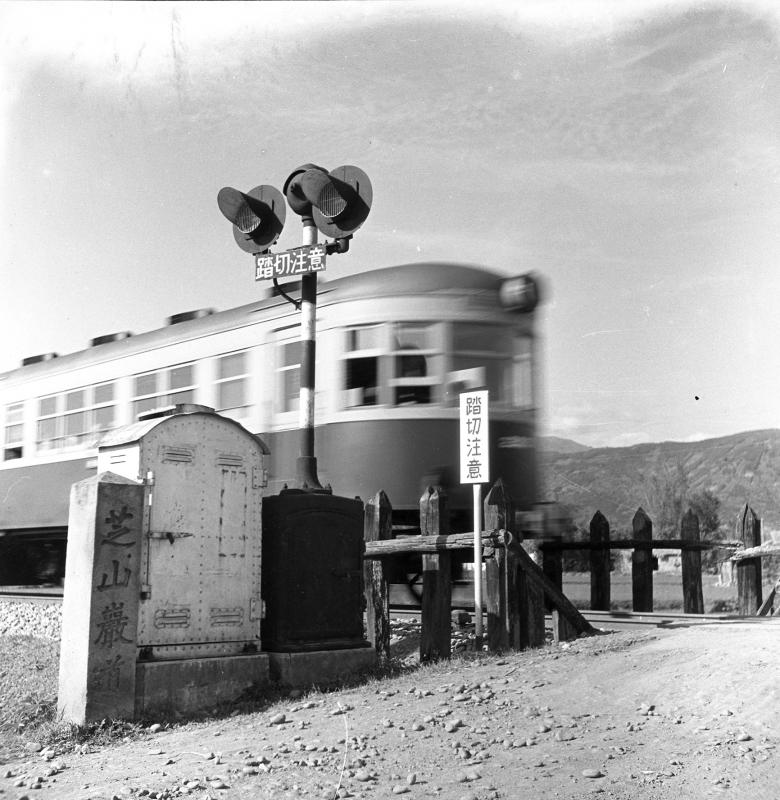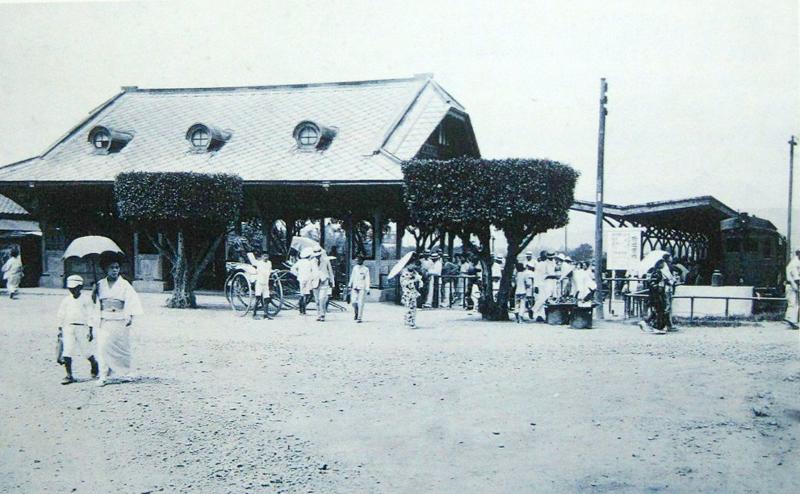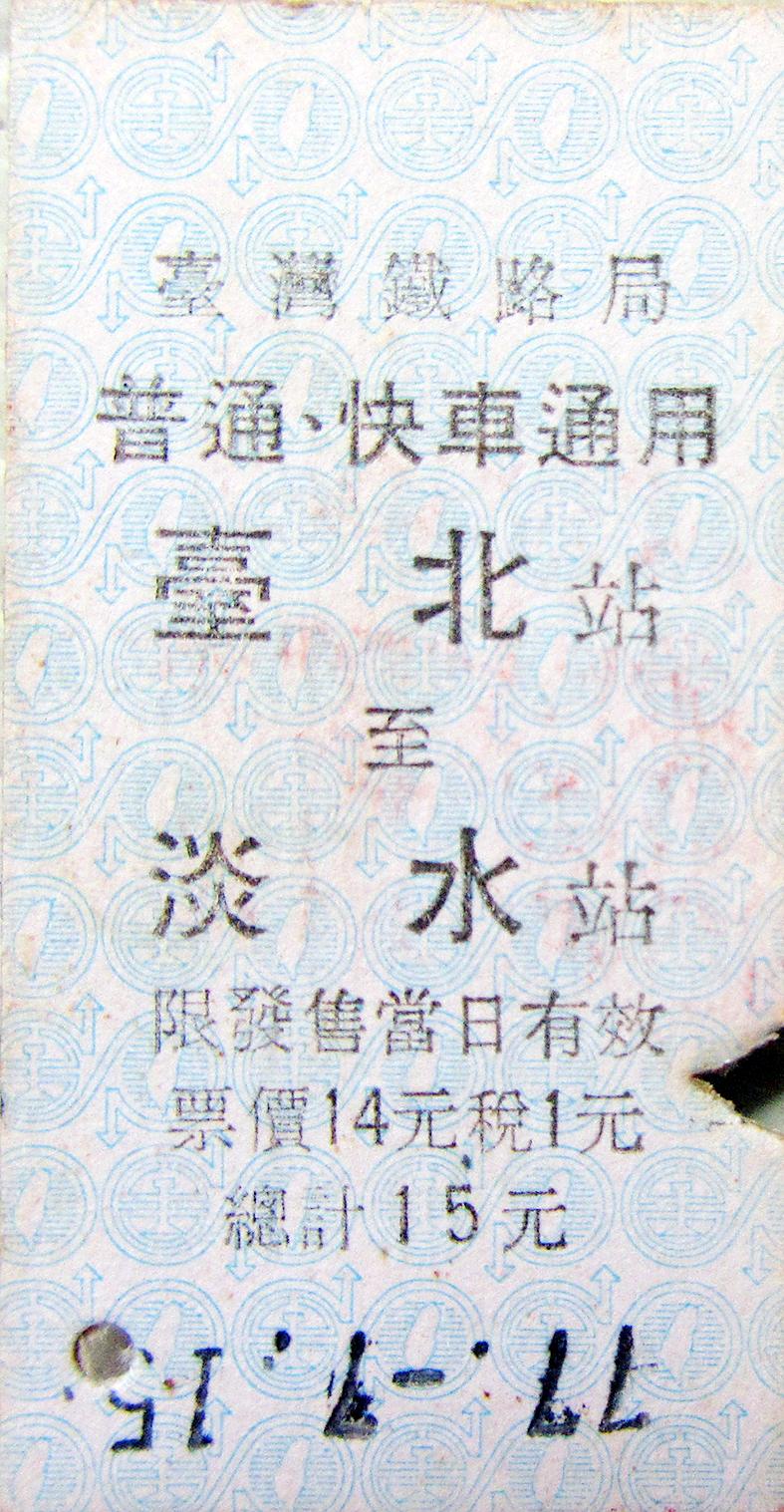July 12 to July 18
Despite being 10 cars longer than usual, the Tamsui-bound train was packed to the brim on the morning of July 16, 1988. Passengers leaned out the window to soak in the scenery, and the train arrived at the final destination to a cheering crowd setting off firecrackers.
This journey was the Taipei-Tamsui line’s final passenger run after 87 years of operation. The official final run actually took place the previous night, but the event was so popular that the Taiwan Railway Administration allowed one more trip for those who missed it.

Photo courtesy of Wikimedia Commons
Freight service would carry on for another two months before the tracks were removed. The estimated 22,000 daily commuters who relied on the train had to seek other means of public transportation until the Tamsui MRT line opened in March 1997. This MRT route closely followed the old rail tracks.
Inaugurated by the Japanese on Aug. 25, 1901, the Taipei-Tamsui railway was built using tracks from the Qing-era Keelung-Taipei line. That day was a significant one in Taiwan’s railway history, as it saw the opening of both the second-generation Taipei Station and Taipei-Taoyuan line.
The Taipei-Tamsui railway diminished in importance over the decades as automobile travel became more common and convenient. Its fate was sealed in 1986 when the Council for Economic Planning And Development formally approved the MRT project, which even it its early stages involved tearing down the railroad.

Photo courtesy of Wikimedia Commons
A NEW BRANCH
The Qing had started building a north-south railroad during the final years of its rule; by the time the Japanese arrived in 1895, it stretched from Keelung to Hsinchu.
However, due to years of mismanagement and sabotage by retreating Qing troops, the railroad was in pretty bad shape. The new rulers spent the first few years rebuilding and rerouting the Keelung-Taipei section, and by 1899 they were ready to continue pushing south.

Photo courtesy of Wikimedia Commons
The Tamsui branch line was conceived in response to sediment buildup in the Tamsui river, and to better transport supplies from the port to support the main line’s southward expansion. A significant portion of the tracks were repurposed from uprooted sections of the Qing-era route due to lack of resources.
The first iteration of the line had only five stops: Taihoku (today’s Taipei), Shirin (Shilin), Maruyama (Yuanshan), Hokuto (Beitou) and Tansui (Tamsui). Kanto (Guandu) was added shortly afterward.
The southern terminus was moved several times — in 1903 to Daitotei (Dadaocheng), in 1915 to Hokumon (Beimen) and in 1924 to Taipei Rear Station, a wooden structure that mysteriously burnt down in 1989.

Photo courtesy of Wikimedia Commons
Five more stations opened in 1915, including Miyanoshita (literally “under the shrine”), which was set at the foot of the path leading to the Taiwan Grand Shrine, the colony’s highest-ranking Shinto place of worship. The shrine was built in 1901 to honor Prince Kitashirakawa Yoshihisa, who died during the 1895 war between the colonizers and resisting local militias. Much effort was made to improve access to the shrine, parts of today’s Zhongshan N Road and Zhongshan Bridge (then called the Meiji Bridge) were built for this purpose.
The shrine was damaged during World War II, and after the war much of its materials were removed for projects elsewhere, including the Zushih Temple (清水祖師廟) in New Taipei City’s Sansia District (三峽). The Chinese Nationalist Party (KMT) renamed Miyanoshita Station “Jiantan” after the mountain the shrine sat on, and built the Grand Hotel in its place in 1952. Jiantan Station was discontinued the following year, but the MRT station in the area took on this name four decades later.
MANY CHANGES
Another notable addition to the Taipei-Tamsui line was the branch from Beitou to the hot springs haven of Xinbeitou in 1916. It was Taiwan’s first railroad built for tourism purposes, and led to a massive boon in the area. The tracks were removed in 1945 and reportedly used as anti-landing barricades along the Tamsui shore to prevent an Allied invasion. It was rebuilt the following year.
After the discontinuation of the railway in 1988, the Taipei City Government sold the historic Xinbeitou Station to the now-defunct Taiwan Folk Village (台灣民俗村) theme park in Changhua for NT$1. Locals launched a campaign to reclaim the station in the late 1990s, and they finally got their wish on April 1, 2017, the 101st birthday of the structure.
A temporary station was added in the Fuxinggang area (復興崗) for a week in 1954 to accommodate that year’s Taiwan Provincial Games (today’s National Games). Riders received commemorative tickets.
In 1966, a single-lane, muddy road between Taipei and Tamsui was widened and named Xiandu Road (仙渡路), providing an alternative means for people to traverse the two locales. It was expanded again in 1972 and given the current name of Dadu Road (大度路). Coupled with the advent of private car ownership, this road began to eat into ridership on the Taipei-Tamsui railway.
By the 1980s, the government determined it viable to remove the railway to make way for the MRT. Dadu Road was upgraded again in 1984, and in May 1986 its speed limit was raised to 70km per hour. The railway’s demolition was approved that same year.
The Tamsui-Taipei MRT line took on all of the railway’s station’ names except for Wangjia Temple (王家廟), which was located between today’s Qilian and Qiyan stations. Curiously, there was never a Wangjia Temple in that area. The station was meant to be named after the nearby Chengan Temple (鎮安宮, also known as Wangye Temple), but it was inexplicably misnamed due to a clerical error.
The MRT line went through many adjustments over the next decade, and between 1999 and 2012 there were two lines running on the tracks, Tamsui-Xindian and Beitou-Nanshijiao. It assumed the current Tamsui-Xiangshan route in 2014.
Taiwan in Time, a column about Taiwan’s history that is published every Sunday, spotlights important or interesting events around the nation that either have anniversaries this week or are tied to current events.

This is the year that the demographic crisis will begin to impact people’s lives. This will create pressures on treatment and hiring of foreigners. Regardless of whatever technological breakthroughs happen, the real value will come from digesting and productively applying existing technologies in new and creative ways. INTRODUCING BASIC SERVICES BREAKDOWNS At some point soon, we will begin to witness a breakdown in basic services. Initially, it will be limited and sporadic, but the frequency and newsworthiness of the incidents will only continue to accelerate dramatically in the coming years. Here in central Taiwan, many basic services are severely understaffed, and

Jan. 5 to Jan. 11 Of the more than 3,000km of sugar railway that once criss-crossed central and southern Taiwan, just 16.1km remain in operation today. By the time Dafydd Fell began photographing the network in earnest in 1994, it was already well past its heyday. The system had been significantly cut back, leaving behind abandoned stations, rusting rolling stock and crumbling facilities. This reduction continued during the five years of his documentation, adding urgency to his task. As passenger services had already ceased by then, Fell had to wait for the sugarcane harvest season each year, which typically ran from

It is a soulful folk song, filled with feeling and history: A love-stricken young man tells God about his hopes and dreams of happiness. Generations of Uighurs, the Turkic ethnic minority in China’s Xinjiang region, have played it at parties and weddings. But today, if they download it, play it or share it online, they risk ending up in prison. Besh pede, a popular Uighur folk ballad, is among dozens of Uighur-language songs that have been deemed “problematic” by Xinjiang authorities, according to a recording of a meeting held by police and other local officials in the historic city of Kashgar in

It’s a good thing that 2025 is over. Yes, I fully expect we will look back on the year with nostalgia, once we have experienced this year and 2027. Traditionally at New Years much discourse is devoted to discussing what happened the previous year. Let’s have a look at what didn’t happen. Many bad things did not happen. The People’s Republic of China (PRC) did not attack Taiwan. We didn’t have a massive, destructive earthquake or drought. We didn’t have a major human pandemic. No widespread unemployment or other destructive social events. Nothing serious was done about Taiwan’s swelling birth rate catastrophe.